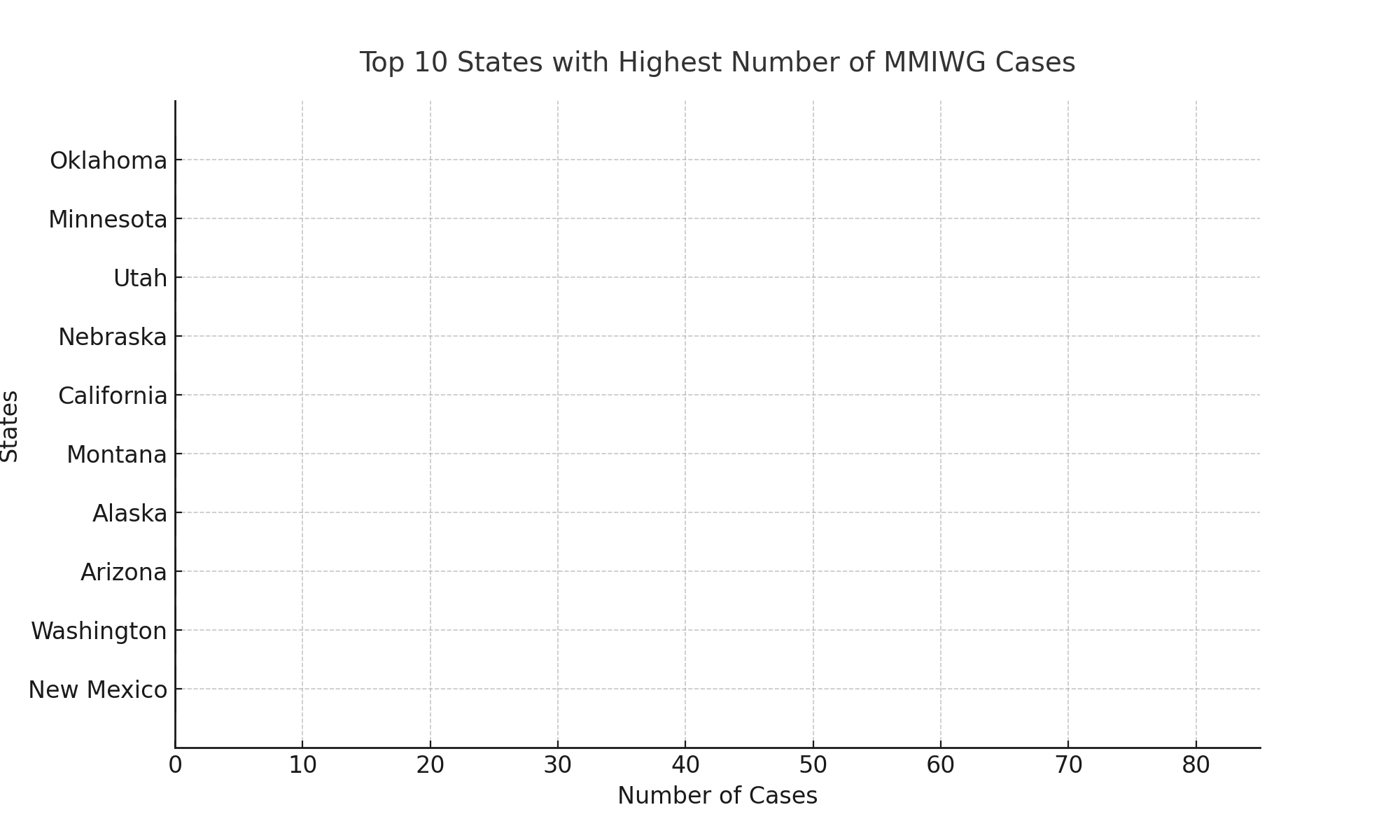Federico Borella Photojournalist

-
Across New Mexico native women and girls are being taken or murdered at relentless rate.
There is deep sorrow and frustration within First Nations communities. Sisters, wives, mothers, and daughters have vanished, leaving families without closure. Many are living with the painful reality of loved ones who are still missing—children growing up without mothers, mothers grieving for their daughters, and grandmothers without granddaughters. For Native Americans, this crisis adds another layer of pain to the historical trauma they have already endured. Communities are desperately seeking justice and answers for these ongoing losses.
Murder is the third leading cause of death for Native women in the U.S., with around 80% experiencing some form of violence in their lifetime. Native women face a murder rate 10 times higher than the national average and are three times more likely to be killed than white women. Non-Native men are predominantly responsible for this violence


CASE ONE
Ranelle Rose Bennett
Ranelle Rose Bennett has been missing since June 15, 2021, when she did not make it to her daughter's 10th birthday celebration. Her daughter, eagerly waiting, sent messages hoping to see her mother, but Ranelle never arrived. Ranelle’s mother, Rose Yazzie, filed a missing persons report on June 21, but the report wasn’t entered into the police system until several days later, adding to the family's frustration. Communication with law enforcement has been infrequent, leaving Yazzie and her family feeling unsupported. Three months after her disappearance, family members discovered some of her belongings, but there have been no significant updates since.
Ranelle’s brother, Jerold Harrison, relocated to Shiprock to assist in the search, following every lead he receives. Despite the emotional toll, he continues his efforts, though he often feels alone in the search. Ranelle’s sister, Jeanelle, shared how the disappearance has deeply impacted the family, especially her two children, who continue to struggle with the absence of their mother.
Despite the challenges, the family holds onto hope, believing that Ranelle will return. Rose Yazzie, now caring for Ranelle’s children, remains faithful that her daughter is still out there.

Shiprock, New Mexico. The Navajo name for the peak, Tsé Bitʼaʼí, "rock with wings" or "winged rock", refers to the legend of the great bird that brought the Navajo from the north to their present lands

Georgianna Harrison, Ranelle Rose's sister

Statistics of MMIWG cases verified by Urban Indian Health institute for the first ever report on the issue. Sources on the links above

A sentence taken from a text message sent by Ranelle's daughter to her mother during her birthday party, while waiting for her to arrive to celebrate her daughter's birthday. Ranelle never made it home that day.

Often left alone by the police, the relatives of the victims personally take care of the searches, walking for hours on the streets and places of the last sightings



Handwritten note by Rose, dedicated to her daughter Ranelle
Rose Bennet, Ranelle's Mother

Portion of New Mexico Map showing most affected locations
What does it feel like when someone you love disappears? When you expect to see them sitting at the table or in their bed, when every time the phone rings or you hear the sound of tires crunching on the gravel driveway, you hope it's them? It's a void that feeds not just on what comes in but also on what surrounds you. On who surrounds you.
Here, everything is silent. Not even the wind makes a sound.
I search the same places where they were last seen, ordinary spots like those we live in every day. I ask around if anyone knows anything, if they remember. Only a girl working at the library responds and shows me Ranelle’s face. She tells me she disappeared years ago, that she’s interested in learning more, and that the problem on the reservation is real. It happens often.

An excerpt from an imaginary conversation between me and Shawna, in the form of text messages

Within the MMIWG movement, a red shawl on a chair symbolizes the presence of missing persons during gatherings
CASE TWO
Tiffany Reid
Tiffany Reid, a 16-year-old Navajo girl, disappeared on May 17, 2004, in Shiprock, New Mexico. She was last seen walking to Shiprock Northwest High School but never arrived. Her family grew concerned when Tiffany didn’t return home that evening. Despite filing a missing persons report 72 hours later, there was limited progress in the investigation.
Two weeks after her disappearance, some of Tiffany’s belongings, including her purse and library card, were found scattered along a road in Arizona, near the New Mexico border. Despite this discovery, no substantial leads emerged. Tiffany was labeled a runaway by authorities, but her family firmly disagreed, describing her as quiet, shy, and unlikely to have run away voluntarily.
Despite efforts from her family, including searches and public pleas for help, there has been no major breakthrough in her case.
Her family has long criticized the slow response by law enforcement, particularly the delay in filing a missing persons report and the challenges posed by the jurisdictional complexities between tribal, state, and federal authorities. The disappearance of Tiffany Reid is one of many cases highlighting the broader issue of missing and murdered Indigenous women, a crisis that often receives limited attention from both the media and law enforcement
In 2018, the family discovered that Tiffany’s name had been purged from the National Crime Information Center (NCIC) database, which complicated the investigation further. After years of advocacy, her name was re-entered into the system. However, the case remains unsolved, and Tiffany has never been found. Her family continues to search for answers, holding on to hope while calling for justice for their missing loved one.
Tiffany Reid would be 36 years old today.


Facial recognition software, helping to draw new portraits of missing persons, simulating ageing and facilitating recognition. Like in the case of Tiffany Reid
Within the MMIWG movement, a red shawl on a chair symbolizes the presence of missing persons during gatherings


One of the very few images of Tiffany Reid, preserved by sister Deiandra.


A drawing from an Associated Press image of Deiandra Reid participating in the in Missing and Murdered Indigenous Persons Awareness Day in Albuquerque, New Mexico, May 5, 2024

Updated list of Missing and Murdered Indigenous People, as you can see on the portal created specifically by the Department of Justice of the state of New Mexico. The list is constantly updated, you can also send reports on missing persons, or submit information, if you are aware of any useful data

Unfortunately, sometimes images of missing persons are completely anonymous and identical for all profiles, making it difficult to identify them.
CASE THREE
Melanie James
Melanie James disappeared in Farmington, New Mexico, in April 2014 at age 21. She was excited about enrolling in college and applying for jobs, according to her mother, Lela. After Melanie failed to show up for a planned dinner, Lela began searching but couldn't find her daughter. Melanie's last known sighting was on April 20, 2014, when her sister Melissa saw her with an unidentified man.
Lela has faced immense emotional struggles throughout the decade since Melanie's disappearance. She described the toll it has taken on her mental health, saying that after the disappearance, she felt confused, couldn’t sleep, and barely ate. Despite these hardships, she still holds on to hope, asking God for the strength and courage to keep going. Lela finds comfort in the Missing and Murdered Indigenous Women (MMIW) community, where she participates in vigils and walks, carrying her daughter’s photo to raise awareness.
While there have been no substantial leads, a reported sighting of Melanie at a Family Dollar gave Lela hope, though her daughter has not been seen since. Lela reflects on the last time she saw her daughter, noting how happy Melanie had been and the sense of direction she was finding before her sudden disappearance. Despite the long search and no answers, Lela continues to believe that Melanie is still out there somewhere.


On the 550 road in new mexico, drivers can find large billboards that spread awareness about missing and murdered indigenous women and girls

In 2019, the Urban Indian Health Institute reported that 95% of MMIWG cases are never covered in national or international media. Only few local newspapers sometimes deal with this issue.
Furthermore, when the media deal with these cases, they often use language that can be perceived as violent or guilty towards the victims, perpetuating negative stereotypes about Native American individuals and contributing to an unfavourable representation of this vulnerable group. Source: UIHI report 2019

CASE FOUR
Shawna Toya
Geraldine Toya, from Jemez Pueblo, is seeking answers regarding her daughter Shawna Toya’s death, which occurred in August 2021. Shawna was found deceased in her car hours after telling her family she was going to the store. The Albuquerque Police Department (APD) quickly ruled her death as an overdose and released her vehicle to the family within 24 hours. However, Shawna’s family remains frustrated, feeling that APD’s investigation was incomplete. They found additional evidence in the car, including a wallet belonging to another woman, which the police did not investigate.
Geraldine expressed her ongoing frustration with the police, stating that each time she requested information, she was told the full report hadn’t been turned in. According to her, the initial report contained only two paragraphs and did not thoroughly investigate the possibility of foul play.
The police report recounts that an officer discovered Shawna unresponsive in her vehicle at Phil Chacon Park. Despite efforts by emergency responders, Shawna was pronounced dead at the scene, and both a crime scene specialist and the Office of the Medical Investigator ruled the death non-suspicious. The vehicle, still containing potential evidence, was released to the family, raising further concerns about the investigation’s thoroughness. Despite these concerns, APD has not reopened the case.


The Last Video of Shawna wiith her family few hours before her death

Shawna was found deceased in her car just hours after telling her family she was going to make a quick run to the store


Geraldine and Ben were awakened in the middle of the night by a phone call announcing the discovery of their daughter’s body.
A photo of Shawna’s car, where she was found dead. She was returned to her parents, a few hours after her death, without any kind of thorough investigation.

The red hand imprint, universally recognized as a symbol of the MMIWG, made by Wilawna, one of Shawna’s daughters


An excerpt from an imaginary conversation between me and Shawna, in the form of text messages.




From the left, Geraldine, Shawna's mother, a cardboard used during rallies asking Justice for Shawna, and to the right three of Shawna’s four sons, right top corner, one of the last ceramic works made by Shawna, jealously guarded by Geraldine and Ben, with the idea of giving them to her children when they grow up.
“It hurts only because it kind of felt like I was discriminated, you know because they kind of judge her saying that she is native.”
Geraldine Toya, Shawna’s mom
As I walk down Main Street, my eye catches the rear windshield of a dusty car. It's a sticker, the imprint of a red hand. The universal symbol of those who refuse to let the voices of the suffering be silenced—against the media and law enforcement, against those who choose to speak only of certain victims while ignoring others.
Silence, once again, like a thin red line.
___________________________________________



